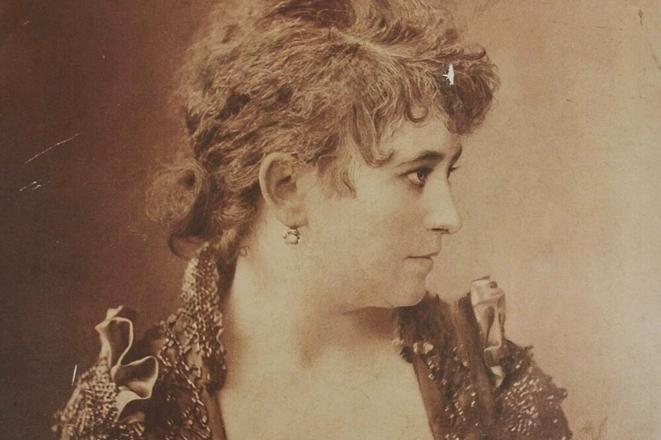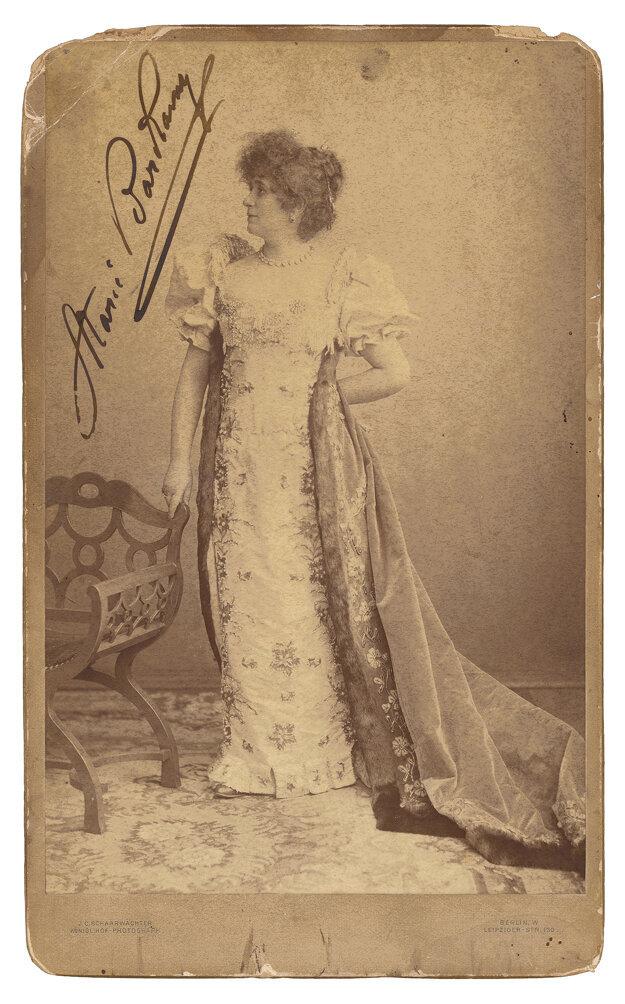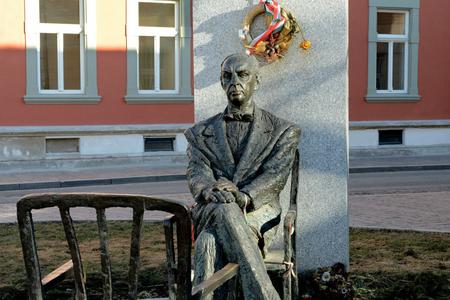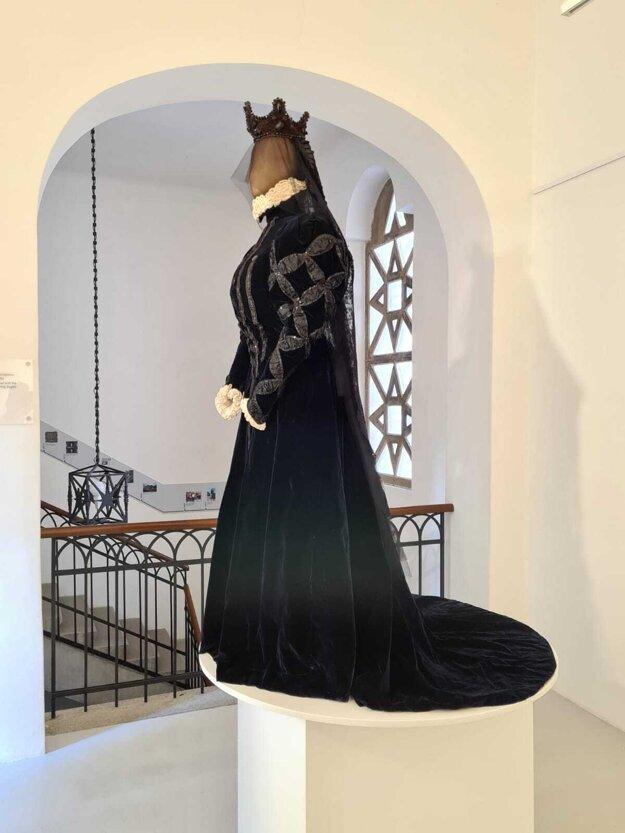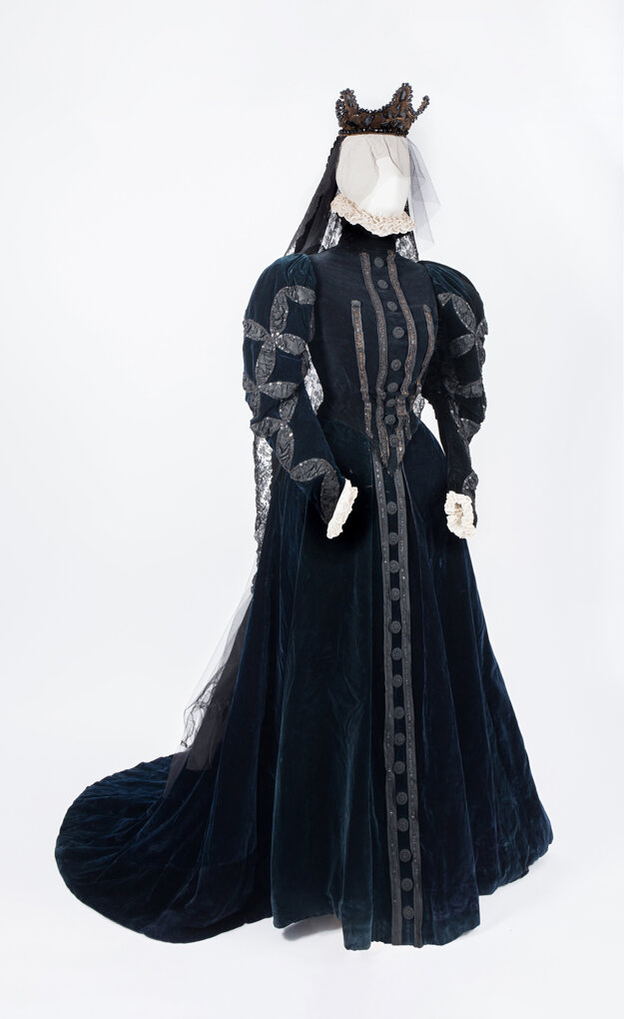She was an internationally acclaimed actress, and she also appeared on the front pages of major magazines. She was admired by both women and men.
Born and raised in Košice, actress Mária Bárkány became famous mainly in Germany, but with her characters she travelled the world from St Petersburg to New York. Like her contemporary and French diva, Sarah Bernhardt.Born and raised in Košice, actress Mária Bárkány became famous mainly in Germany, but with her characters she travelled the world from St Petersburg to New York. Like her contemporary and French diva, Sarah Bernhardt.
But while Bernhardt is remembered to this day, Bárkány eventually fell into oblivion.
The story of the actress from Košice is now being presented to people by the Jewish Museum of Prešov, which owns a collection of her items, including the theatrical costume of Queen Mary Stuart from the turn of the 19th and 20th centuries.
Artefacts are being displayed at the Treasures of the Jewish Museum in Prešov III exhibition in the Bratislava synagogue on Heydukova Street.
Supposed to have been an accountant
Bárkány was born in 1852 into the family of a Jewish merchant. Her father sent her from Košice to Vienna to study when she was about 15 years old.
"He wanted her to become an accountant, which would also have been advantageous for him as a businessman," said Zuzana Koblišková, who mapped the life and career of the actress for the Jewish Museum Prešov from available sources.
Barkány did not return to Košice to settle down in the end. But she performed in the city many years later at a charity concert at the Hotel Schalkház in 1917.
"Some articles suggest that she was already interested in the theatre when she went to church school in Košice. She appeared in school performances.
In Vienna, she lived with her grandmother's brother, József Klein. He and his wife encouraged her to go into theatre. Gradually, she began to study with important actors, " Koblišková said.
When researching Bárkány's life, Koblišková mainly studied old newspapers; the Slovak Theatre Institute did not know anything about the famous actress.
At the start, Koblišková had very little basic information about the actress, including a few short reviews on a poster promoting her on one tour. Koblišková rewrote them and found one sentence from one of the reviews through a full-text search in the German newspaper database.
"In Germany and Austria, they have large databases of old newspapers, magazines and everything in general. I even managed to find her telephone number and the address where she lived in Berlin," she said.
Berlin has scanned the telephone numbers and directories from the end of the 18th century onwards.
"It was very easy to trace where she lived. She moved about three times within Berlin, and it is possible to document exactly when she lived at what address," she added.
She enchanted a German emperor
Recognised actors such as Adolf von Sonnenthal, Maurice Strakosch and Carl von La Roche gave Bárkány acting classes in Vienna, and they quickly realised she was talented. They helped her get a job at a theatre in Frankfurt am Main.
She later moved to Hamburg, where she attended acting classes led by the well-known professor Chérim Maurice. He made her a famous actress, Koblišková argued.
Then she arrived at Schauspielhaus, the royal theatre in Berlin.
Sometime before she settled in Berlin, Bárkány had been on tour in St Petersburg. At the same time, the famous actress Sarah Bernhardt was in the Russian city.
"However, the audience gave Bárkány a much better reception than they did Bernhardt. Although it was more for political reasons and it was probably not about which one was more talented, she made a splash," Koblišková said.
Bárkány's fame only grew. She was loved by German and French audiences, and she also had admirers among the high nobility. She also enchanted an emperor.
Koblišková found a report in the French newspaper La Presse from 1893, which stated that William II, son of Emperor Frederick III, surprised his father with Bárkány at a time which "was not worthy of an emperor."
"Obviously the son also had an affair with her because the newspapers wrote about them as rivals. But then they never reported on it again and Bárkány left in silence," Koblišková said.
It is the only sensational affair that Koblišková has so far managed to find out about Bárkány. Unlike the eccentric Bernhardt, Bárkány was probably not very interesting for the tabloid media. According to Koblišková's findings, the famous actress did not live a tumultuous life.
"I think she was more of an intellectual. It is evident from the people she surrounded herself with," Koblišková maintained.
Bárkány often helped, performed at charity concerts, financially contributed to the construction of churches, was very charitable and intellectual, she added.
"I don't think she was as riotous as Bernhardt, who was known for her affairs and, for example, travelled on her own train with a wagon full of exotic animals," Koblišková continued.
Bárkány probably never married. Until the end of her life she was referred to in newspapers by the abbreviation Frl., which stands for Fräulein (Miss).
"She was part of high society, but she had no long-term relationship or children. I think that if she had, I would have definitely found out something about it," Koblišková noted.
Actresses as fashion icons
The 19th century provided female actresses with more opportunities in the world of theatre.
"The shift in drama towards the greater inclusion of female characters allowed some actresses to become real stars and live like celebrities," Koblišková said.
Treasures of the Jewish Museum in Prešov III exhibition
Venue: Bratislava synagogue on Heydukova Street
Date: until October 2021
Exhibits: more than 30 exhibits from the collection of the historically first Jewish museum in Slovakia
Opening hours: every Friday and Sunday from 10:00 to 16:00
They also became fashion icons. Spectators and supporters often wanted to look like them, walk like them, and wear the same clothes as the actresses did. Some even imitated their laughter.
"The drama of that time offered actresses more roles that did not portray women as housewives, but where they were heroines who achieved something. Several plays were written for Bernhardt, in which she played a spy using her female prowess," said Koblišková.
At that time, it was important that actresses paraded in great robes on stage, the expert added.
Many conversational plays were not written for art, but for an actress to promote herself and her dresses and to point out that she could afford them. The more famous and richer the actress, the more robes she could show to the public. But to do that, she first needed roles that would allow her to change costumes often.
"We would not understand today many of the dramas performed at the time, because it was mainly about the actresses being able to show themselves," Koblišková said.
Since 1900, Bárkány could afford to go and perform with her own ensemble. She had her own "second-rate" actors who were supposed to help her perform and star. She even had a permanent male partner with whom she would play a loving couple, Koblišková went on to say.
A theatrical costume from 1900 is being exhibited to the public for the first time by the Jewish Museum of Prešov in the Bratislava synagogue. It was tailor-made for Bárkány. In Paris in the late 1900s she played the role of Mary Stuart while wearing the costume, in a play by Friedrich Schiller.
Zuzana Koblišková
studied History and Theory of Art at Comenius University in Bratislava;
completed her PhD studies at the University of Hull, England, where she devoted her study to scenography for productions of Shakespeare's plays in Slovak theatres from 1920-1989;
prepared an exhibition in the Slovak National Gallery on the founder of Slovak professional scenography, Ladislav Vychodil, in 2020;
in charge of the digital archive at the Slovak National Gallery.
"It is obvious that Bárkány had this costume made especially for a Paris tour," Eva Hasalová of the Slovak National Museum writes in the exhibition catalogue. "The fact that it remained in her estate suggests that she financed it herself."
Hasalová studied the costume and its history for the current exhibition. The dress has a label on the inside of the jacket with the embroidered name of the salon that made it for Bárkány.
"It was the salon Mmes de Beauvais on the Faubourg St Honoré Street, which we could not find more details about. This address is still very prominent," Hasalová said.
The street is home to the Elysee Palace and luxury fashion brands. Already at the end of the 19th century it was one of the best addresses, with many well-known tailors with shops on it. At that time, they were already institutionalised into haute couture.
She added that though the label and costume were crafted professionally, "it can be seen in the tailoring details that they were not made with the precision required for clothing from the haute couture salons on this street."
The explanation may be that a theatrical costume was not as important as luxury designer models. Also, it is unknown whether the salon was a tailoring salon for fashionable clothes or a costume studio. Probably both, Hasalová claimed.
Puccini also visited her
In 1900, Bárkány was 48 years old. The size of the dress indicates that at that age she was 67.5 cm at the waist.
The cult of youth and beauty was extremely important for actresses at that time. Bárkány enjoyed hiding her age as well.
"Several times she stated her year of birth differently, so there was various misinformation about what, where, when she performed and at what age. The newspapers wrote what she told them, and she kept on reducing her age," Koblišková said.
At that time, it was common. But in one of the obituaries in 1928, on the other hand, they made her older. They wrote that she died at 80, but she died at the age of 76.
Bárkány also enjoyed misleading journalists about her German. Although she came from Hungary and was proud of her Hungarian origin, she considered herself primarily a German actress and a proud German nationalist. However, she told reporters that she had learnt German perfectly only in adulthood.
"It was not quite like she had to learn German. She had already been very good at it, because knowing German was part of the basic intellectual assets of a Jewish family at the time," Koblišková said.
The actress' niece, Irma Weile, who became a famous opera singer, once mentioned in an interview how she met Puccini at Mária Bárkány's.
"He was rehearsing his Berlin opera Madame Butterfly at the time. He was playing some parts of it on the piano, and I decided to play and sing those parts as I heard them. Puccini was enchanted and asked my family to support me in developing my musical talent," Koblišková quotes Weile in her study.
Koblišková wants to continue her research on the life and career of Mária Bárkány. She believes that there are still many unanswered questions around her.
"I would like to find out more about her life in Berlin. Because she was not married, she could probably live a more bohemian life, and that is very interesting," she said. "I would also want to find out why she has been forgotten."
©Sme

